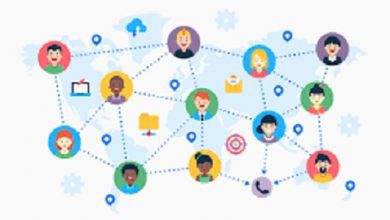Self service definition with 7 types of self service and Tools to measure
What is self-service?
The definition of Self-service refers to any point of sale or service where a customer can avoid interaction with another person.
Self-service means offering customers and employees tools and information so that they can find answers to their questions immediately , and thus have a better experience with a product or service.
Through self-service, customers can serve themselves the desired products and make their payment through an automated system. In customer service , it’s about being able to resolve any query without human interaction.
What are the benefits of self-service?
Self-service allows you to provide customer support without the need to interact with a company representative. This type of service is no longer a “must have,” but a paramount necessity to provide a satisfying customer experience .
Self-service has become so popular that 70% of customers expect a business website to include a self-service application.
Having a self-service portal with helpful content will provide a better customer experience, and can even reduce customer support costs.
What types of self-service are there?
The most common types of self-service for customers are self-service kiosks, online knowledge bases, and chatbots. Below we will introduce you to what each one consists of and how they can help improve the experience of your customers :
1. Self-service kiosk
A self-service kiosk is a type of self-service that consists of a device that allows the consumer to interact directly with a company, receiving the service at their own convenience.
Self-service kiosks are widespread in fast food restaurants, where the goal is to streamline the process of ordering and waiting for food.
Self-service technology in restaurants is a growing trend as it increases operational efficiency and helps improve customer service by eliminating waiting lines and wasted time.
A kiosk can be good for short, specific tasks, like finding an item in a physical store or checking the price. Self-check kiosks can also help a customer with purchase and payment, you can even use kiosk mode surveys to get information from your users.
2. Online knowledge bases
Having a help section has become a common practice on company websites. In some cases, it is a frequently asked questions (FAQ) section and in others, a blog, downloadable guides or explanatory content packed with valuable information.
Companies that excel at this form of customer self-service often employ a mix of both.
One of the best ways to do this is to design and deploy a searchable online knowledge base that customers can use to find help when they need it.
Generally, much of the information it will contain can come directly from your company’s customer service representatives, who are familiar with common customer needs and questions.
3. Chatbots and AI
With the help of conversational AI , live chatbots are one of the most widely used types of self-service. They can respond to customer inquiries in seconds, provide assistance, and even assist them in the process of managing reservations and making payments.
Live chatbots are a great way to help confused customers. This is why many business websites offer a pop-up chat window that appears after a certain period of time on the website.
These bots have the ability to guide the customer towards the answers they are looking for. Even when they don’t have answers, they can steer customers in the right direction. Chatbots are also a great way to show that a company cares about its customers and the Customer Experience .
4. Online banking services
Telephone banking was a first step in improving the customer experience, eliminating long waiting lines to access simple banking services beyond normal business hours, but it still required the customer to invest a great deal of time in being able to be attended by an executive.
Online banking is the next version of self-service telephone banking, now allowing the customer to access their finances, make international payments or settle their accounts safely without the need to speak to someone .
This automation allowed not only to save personnel resources, but also had as a result that customers no longer have to spend time going to a bank branch or depend on the time of telephone executives, hence it is one of the types of self-service of greater impact.
5. Barcode scanners for supermarkets
Supermarket managers and retail store owners have been at the forefront of adopting self-service technologies because a large portion of day-to-day expenses goes to customer service staff.
Today, many supermarkets have implemented self-service checkouts with barcode scanners that customers can use to pay for their products without having to queue, while allowing fewer customer service staff without losing the level of billing .
Today, this technology is as intuitive to use as a mobile application and is often the preferred choice of consumers.
6. Interactive voice response (IVR)
Interactive Voice Response (IVR) is another of the fastest growing types of self-service. It is an automated system that allows customers to make a phone call to access information about their services through a voice system of pre-recorded messages.
Generally, this system is used to provide a menu of options, for example, to consult a receipt, pay a balance through bank cards or redirect to a specific service department.
Developed in the mid-1970s, interactive voice response (IVR) systems are one of the oldest forms of customer self-service available , and have evolved into one of the most widely used types of self-service globally.
For an IVR system to become a high-performing customer service asset, it is necessary to follow IVR best practices at all times, such as complex menu options, and to keep automatic responses short and concise.
7. Help mobile apps
In a world where the vast majority of customers are digital natives, offering customer service through a personalized mobile help app is a viable option for many businesses.
For example, companies can deploy a mobile app that allows customers to check their outstanding balances, make service appointments, or even ask questions through a live chat feature.
These applications can be built using low-code platforms that offer simple and easy-to-use development tools.
However, it is important to recognize that as mobile technology evolves, it will also be necessary to update and optimize the company’s mobile application to avoid becoming obsolete or outdated for users.
Tools to measure the quality of self-service
As technologies advance rapidly, self-service processes need to be continuously evaluated and optimized to ensure excellence in quality of care in the different types of self-service you offer.
Some of the tools that you can implement to measure customer service are customer satisfaction surveys , which will allow you to know what consumers think about the services you are providing.




